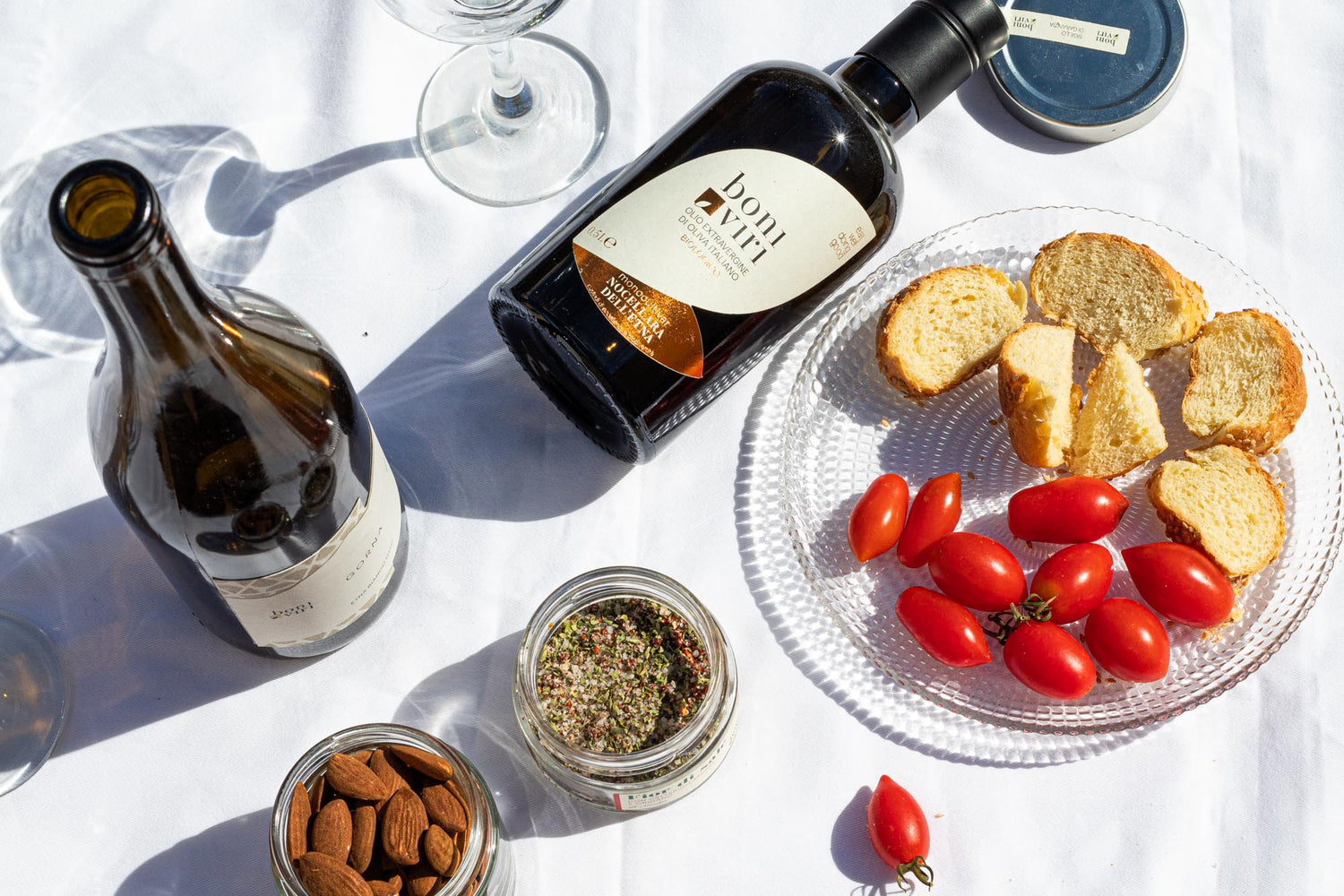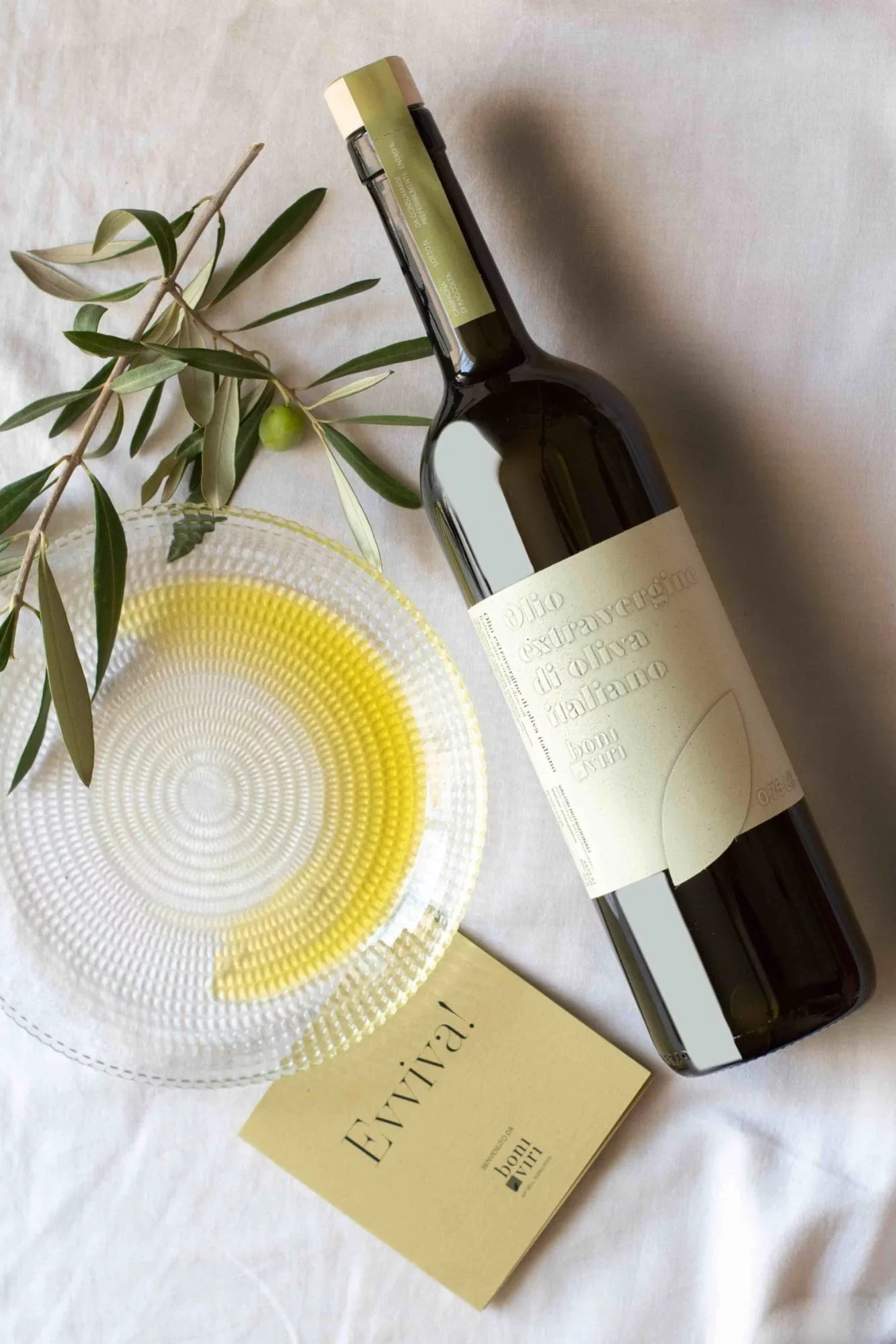For packaging we started from one goal: choosing the best materials for quality and safety, with a view to sustainability and waste reduction.
The packaging of extra virgin olive oil represents an interesting challenge in terms of sustainability.
In this sense, the criteria for choosing packaging are linked to considerations of different nature, such as weight, sustainability at the source of the materials, their recyclability and the conservation properties of the oil.
In choosing the right packaging for Boniviri oil, we rethought traditional choices, keeping only the necessary elements and simplifying the complexity that is often created by marketing needs. Our choices started from one goal: choosing the best materials for quality and safety, with a view to sustainability and waste reduction.
The first choice concerns the container par excellence: glass.
Although it is a heavier material than plastic and aluminum (and therefore has a greater impact in terms of greenhouse gas emissions related to transportation), glass is the best material for storing oil because it is inert and does not allow the passage of components between the container and the contents (as plastic does).
In this case, our choice was based on quality and safety. However, to reduce greenhouse gas emissions, we chose to buy the bottles from the glassworks closest to us: in Marsala, Sicily, to reduce the impact of transportation. To reduce the ratio between content and container (product-to-packaging ratio), compared to the traditional 500 ml bottle, we chose a 250 ml bottle, enough for about 2 weeks' consumption, in order to reduce waste and encourage more conscious consumption.
For the cap, we chose an aluminum cap with a plastic gasket, an easily recyclable material with good sealing capacity. We avoided the use of plastic caps, which are less recyclable and have a greater impact in terms of production and disposal.
For the label, we chose a recycled paper material, with water-based inks, to reduce the environmental impact. Furthermore, we opted for an essential and clear design, to communicate transparently and directly with the consumer.
Finally, for the external packaging, we have chosen recycled cardboard boxes, with minimalist graphics and without the use of plastic. The boxes have been designed to protect the product during transport, minimizing the use of materials and facilitating recycling.
In this way, we have tried to reconcile quality, safety and sustainability, to offer a product that respects the environment and promotes more conscious consumption.




